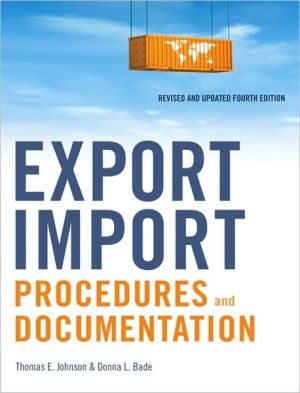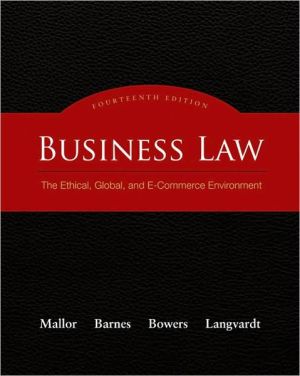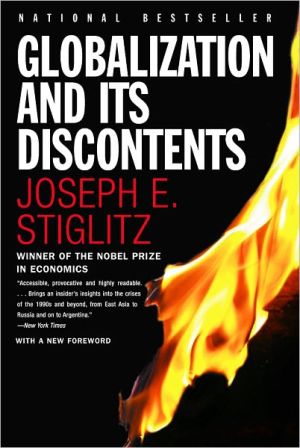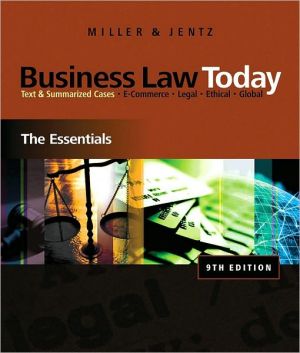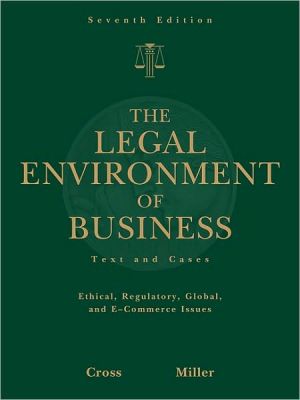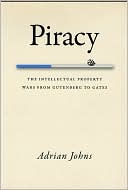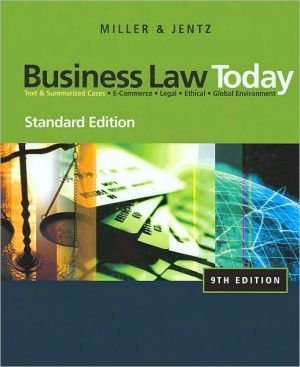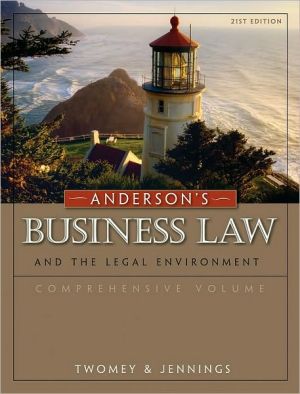Export/Import Procedures and Documentation
Hundreds of factors combine to determine exactly how you import or export goods. Where are they coming from or going? What are they made of? What are they used for, and by whom? And because every import or export scenario is unique, you need to make sure you account for every detail, lest you make errors that could cost your business time, money, licenses, reputation, and more.\ This newly revised and fully updated edition of Export/ Import Procedures and Documentation is designed to address...
Search in google:
Hundreds of factors combine to determine exactly how you import or export goods. Where are they coming from or going? What are they made of? What are they used for, and by whom? And because every import or export scenario is unique, you need to make sure you account for every detail, lest you make errors that could cost your business time, money, licenses, reputation, and more.This newly revised and fully updated edition of Export/ Import Procedures and Documentation is designed to address nearly every conceivable set of circumstances involving international trade—and protect your business legally and financially. Chock full of sample documents, brand new legal information, and situation-specific procedures, the book gives you the power to:Exploit new online resources, including government agency websitesUse the Internet to file forms, speed supply chain processes, and moreNavigate increased security and new enforcement structures resulting from recent well-publicized import problemsKeep better records and gain compliance company-wideProtect trademarks and copyrights overseasInterpret currency fluctuations when pricing or evaluating goodsIdentify trustworthy and compliant suppliersThe book also covers in-depth how to create, keep, and file purchase and sale documents, certificates of origin, and dozens of other process documents, as well as how to leverage opportunities that may be unique to your product or industry. The dozens of sample documents and forms include bills of lading, notices of action, penalty and seizure notices, customs forms, purchase agreements, sample contracts, commercial and consular invoices, inspection certificates, letters of credit, and much more.A trusted reference since the first edition was published nearly two decades ago, Export/Import Procedures and Documentation covers every conceivable situation you’re likely to encounter in the global trade arena. Don’t leave port without it. Booknews The fourth edition of the reference for export/import professionals is revised to include new forms and instructions, new US Customs Service checklists, and new Automated Export System procedures. It overviews the entire export/import process and provides ready-to-use forms with instructions, cost-saving shortcuts, and tips on building a better operation. A training manual for new employees is included, plus a quick course on advanced techniques for more experienced professionals. There is also a glossary of 250 international trade terms. New to this edition is a section on e-commerce in international marketing, listings for export and import software, and a list of Web sites for 94 export and import agencies and information sources. Johnson is a partner in an international trade law firm. Annotation c. Book News, Inc., Portland, OR (booknews.com)
Chapter 1\ Organizing for Export and\ Import Operations\ Smooth, efficient, and compliance-oriented (and, therefore,\ profitable) exporting or importing requires that certain\ personnel must have specialized knowledge. The personnel\ involved and their organization vary from company to\ company, and sometimes the same personnel have roles\ in both exporting and importing. In small companies, one\ person may perform all of the relevant functions, while in\ large companies or companies with a large amount of\ exports or imports, the number of personnel may be large.\ In addition, as a company decides to perform in-house the\ work that it previously contracted with outside companies\ (such as customs brokers, freight forwarders, consultants,\ packing companies, and others) to perform, the\ export/import department may grow. As business increases,\ specialties may develop within the department, and the\ duties performed by any one person may become narrower.\ A. Export Department\ For many companies, the export department begins in the\ sales or marketing department. That department may\ develop leads or identify customers located in other\ countries. Inquiries or orders may come from potential\ customers through the company’s web site where the\ destination is not identified. When such orders come\ in, the salespeople need to determine what steps are\ different from its domestic sales in order to fill those export\ orders. Often the exporter’s first foreign sales are to\ Canada or Mexico. Because the export order may require\ special procedures in manufacturing, credit checking,\ insuring, packing, shipping, and collection, it is likely that\ a number of people within the company will have input\ on the appropriate way to fill the order. As export orders\ increase (for example, as a result of an overseas distributor\ having been appointed or through an expansion of Internet\ sales), the handling of such orders should become more\ routine and the assignment of the special procedures\ related to an export sale should be given to specific\ personnel. It will be necessary to interface with freight\ forwarders, couriers, banks, packing companies, steamship\ lines, airlines, translators, government agencies, domestic\ transportation companies, and attorneys. Because most\ manufacturers have personnel who must interface with\ domestic transportation companies (traffic or logistics\ department), often additional personnel will be assigned to\ that department to manage export shipments and interface\ with other outside services. Some of this interface, such\ as with packing companies and steamship lines, and\ possibly government agencies and banks, may be handled\ by a freight forwarder. The number of personnel needed\ and the assignment of responsibilities depend upon the\ size of the company and the volume of exports involved.\ A chart for a company with a large export department is\ shown in Figure 1–1. The way in which an export order\ is processed at the time of quotation, order entry, shipment,\ and collection is shown in Figures 1–2, 1–3, 1–4, and 1–5,\ respectively. Smaller companies will combine some of\ these functions into tasks for one or more persons.\ B. Import Department\ A manufacturer’s import department often grows out of the\ purchasing department, whose personnel have been\ assigned the responsibility of procuring raw materials or\ components for the manufacturing process. For importers\ or trading companies that deal in finished goods, the import\ department may begin as the result of being appointed as\ the U.S. distributor for a foreign manufacturer or from\ purchasing a product produced by a foreign manufacturer\ that has U.S. sales potential. Because foreign\ manufacturers often sell their products ex-factory or\ FOB plant, a U.S. company that intends to import such\ products must familiarize itself with ocean shipping,\ insurance, U.S. Customs clearance, and other procedural\ matters. Increasingly, a number of U.S. manufacturers are\ moving their manufacturing operations overseas to\ cheaper labor regions and importing products they\ formerly manufactured in the United States. That activity\ will also put them in contact with foreign freight\ forwarders, U.S. customs brokers, banks, the U.S.\ Customs and Border Protection, marine insurance\ companies, and other service companies.\ C. Combined Export and Import Departments\ In many companies, some or all of the functions of the\ export and import departments are combined in some way.\ In smaller companies, where the volume of exports or\ imports does not justify more personnel, one or two\ persons may have responsibility for both export and import\ procedures and documentation. As companies grow larger\ or the volume of export/import business increases, these\ functions tend to be separated more into export departments\ and import departments. However, because both\ departments may end up being in contact with some of the\ same outside parties (such as banks, those freight\ forwarders that are also customs brokers, or domestic\ transportation companies), some of these activities may\ be consolidated in specific persons for both export and\ import, while other personnel will work exclusively on\ exports or on imports. A diagram of the interrelationships\ between the export and import personnel in the\ company and outside service providers is shown in\ Figure 1–6.
List of FiguresForewordPrefaceAcknowledgmentsPt. IOrganizing for Export and Import Operations1Ch. 1Organizing for Export and Import Operations3Pt. IIExporting: Procedures and Documentation15Ch. 2Exporting: Preliminary Considerations17Ch. 3Exporting: Sales Documentation60Ch. 4Exporting: Other Export Documentation114Ch. 5Export Controls and Licenses197Pt. IIIImporting: Procedures and Documentation237Ch. 6Importing: Preliminary Considerations239Ch. 7Importing: Purchase Documentation280Ch. 8Import Process and Documentation305Pt. IVSpecialized Exporting and Importing373Ch. 9Specialized Exporting and Importing375Appendices389App. AGovernment Agencies and Export Assistance391App. BInternational Sales Agreement (Export)409App. CCorrect Way to Complete the Shipper's Export Declaration417App. DAutomated Export System (AES) and AES Direct437App. EU.S. Customs Reasonable Care Checklists455App. FHarmonized Tariff Schedules (Excerpts)465App. GInternational Purchase Agreement (Import)483App. HRules for Completing an Entry Summary491App. IRules for Constructing Manufacturer/Shipper Identification Code525App. JCustoms Audit Questionnaires533App. KList of Export/Import-Related Web Sites541Glossary of International Trade Terms547Index571About the Author583
\ BooknewsThe fourth edition of the reference for export/import professionals is revised to include new forms and instructions, new US Customs Service checklists, and new Automated Export System procedures. It overviews the entire export/import process and provides ready-to-use forms with instructions, cost-saving shortcuts, and tips on building a better operation. A training manual for new employees is included, plus a quick course on advanced techniques for more experienced professionals. There is also a glossary of 250 international trade terms. New to this edition is a section on e-commerce in international marketing, listings for export and import software, and a list of Web sites for 94 export and import agencies and information sources. Johnson is a partner in an international trade law firm. Annotation c. Book News, Inc., Portland, OR (booknews.com)\ \ \ \ \ BooknewsThis combination desktop reference, training manual, and resource for some 100 forms and documents pertinent to import/export business matters is updated (last edition, 1994) to cover new regulations and protocols. The volume's nine chapters are divided into four major sections: organizing for export and import operations; procedures and documentation for exporting; procedures and documentation for importing; and specialized exporting and importing. Abundant appendices list pertinent rules, agreements, and other documents. Annotation c. by Book News, Inc., Portland, Or.\ \
